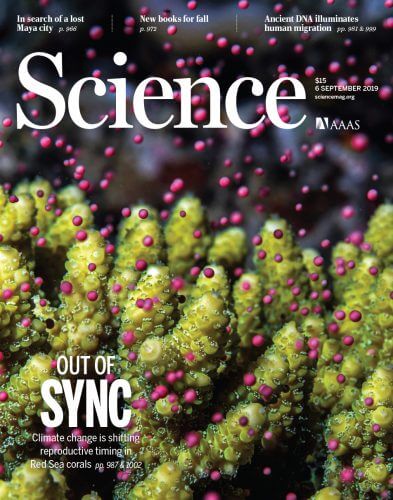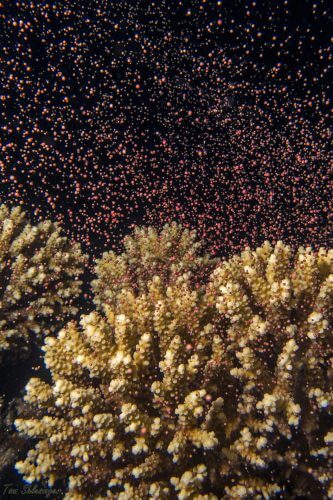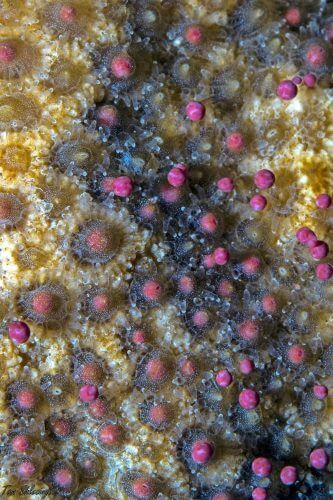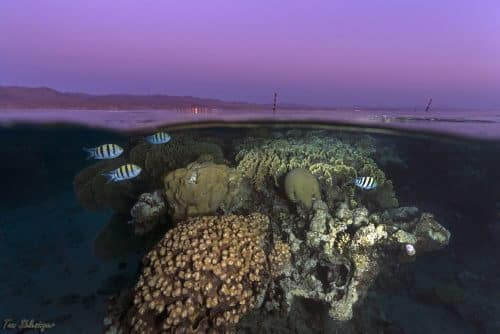This is what researchers from Tel Aviv University revealed in a study to be published on the cover of Science magazine. The researchers believe that the disruption may have been caused by changes in environmental factors - such as climate change or various water impurities

The article will be published on 6.9.19 in the prestigious journal Science who devoted a cover story to the research
Researchers at Tel Aviv University, led by Prof. Yossi Loya and doctoral student Tom Schlesinger from the School of Zoology, have revealed a disruption of coral breeding events in the Gulf of Eilat - massive events synchronized by extremely precise coordination between a variety of environmental factors. In addition, they found that some species almost never produce offspring. The researchers believe that the disruption may have been caused by changes in environmental factors - such as climate change and/or various water impurities. They express concern that over time the damage to reproduction may pose a significant threat to the very existence of many coral populations around the world.
The article will be published on Friday 6.9.19 in the prestigious journal Science in August 2019, which even dedicated the cover story to the research.
"The coral breeding events were the talk of the town among researchers and marine nature enthusiasts, and were even called 'the world's biggest orgy,'" says Tom Schlesinger. "This is a short event, lasting only a few minutes, that only happens once a year: thousands of corals along hundreds of kilometers of reefs simultaneously release huge amounts of eggs and sperm into the sea, which fertilize each other. The perfect timing of the event is based on a very precise synchronization between several factors in the environment such as: the temperature of the sea water, the intensity of the sun's radiation, the wind, the appearance of the moon and the time of sunset, and the seasonal changes that apply to them. We wanted to examine whether the rapid changes taking place today in the marine environment affect the success of reproduction, which, like any other animal, depends on the future of corals."
The first part of the research consisted of nocturnal field surveys below the sea level during the coral's main breeding season: 5.5-2.5 hours every night from June to September, over four years, from 2015 to 2018 - and a total of 225 nights. In this way, they followed the reproductive events of each of the coral species in the field, and counted how many individuals of each species participate in the event each night - that is, they emit sperm cells/eggs into the water. "We found that in a number of species the synchronization of reproduction went completely wrong," testifies Schlesinger. "Several decades ago, short and focused breeding events were recorded in the Gulf of Eilat, which took place on specific and fixed nights of the year. Today those events are spread over extended periods of time, sometimes up to two months. That is, almost every night, a small number of individuals release eggs and sperm cells - some colonies released all the seeds and eggs, some released only a part, and others did not participate in the event at all." To provide a more in-depth look at the phenomenon, the researchers decided to examine it in the laboratory as well.

For the research in the laboratory, the researchers collected coral samples from different sites in the Gulf of Eilat at different times throughout the breeding season, during the four years of the study. They examined the samples according to four indicators: the size of the eggs indicating their maturity, the number of eggs in each polyp (a polyp is the smallest basic building block of coral colonies), the percentage of fertile polyps in each coral colony, and the percentage of fertile colonies in the entire population. "We found disruptions in synchronization in all indicators and at all levels - the polyp, the colony and the entire coral population," says Prof. Loya. "We still don't know what exactly causes the disruptions, but they may have been caused by climate change, such as the warming of the sea water (the waters of the Bay of Eilat are warming at a rate of about 0.31 degrees Celsius per decade) or various human-made infections."

To examine the effect of the disruption in timing on the degree of reproductive success, the researchers monitored marked sections of the natural reef. In 2015, they mapped the thousands of corals in these plots, and in the following years they used surveys and high-resolution photography to track the changes in different species of corals - mortality compared to the settlement of new young corals. Schlesinger also adds that "apparently the current situation of the coral company in Eilat Bay is good, and every year many new corals are recruited to the reef, but we found big differences between different species of corals. In species where a lack of synchronization in reproductive events was observed, a significant lack of new generations of young corals was also discovered. In fact, it seems that some species have not been able to produce new generations at all for several years, which endangers the future of the entire species."

"Our research," concludes Professor Levia, "is a rallying cry for coral reef researchers all over the world to continue investigating the phenomenon we uncovered in the Gulf of Eilat, and to check what are the causes of the disturbance. We have the responsibility to identify in this way coral populations, which appear to be healthy and thriving, but in fact may be on the verge of collapse due to the lack of a next generation. We must take all possible measures, which will prevent further damage to the coral reefs, which are also an essential habitat for many other species, and create the greatest biological diversity in the marine environment."
